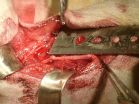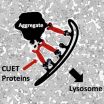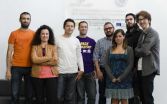(Press-News.org) Imagery from NASA's Aqua satellite captured a wide-eyed Typhoon Rammasun as it was making landfall in northern Hainan Island, China early on July 18. A rainfall analysis using another NASA satellite showed the flooding potential of the storm as it left the Philippines and headed for China. Now, Rammasun is headed for a final landfall near the northeastern border of Vietnam and China.
On July 17, an analysis of Typhoon Rammasun's rainfall was conducted at NASA's Goddard Space Flight Center in Greenbelt, Maryland. The rainfall analysis covered the storm's rainfall from July 10 to 17. The Tropical Rainfall Measuring Mission or TRMM-calibrated merged global Multi-satellite Precipitation Analysis (TMPA) indicated that rainfall totals of over 325 mm (about 12.8 inches) occurred in many parts of the central Philippines as Rammasun swept through.
Typhoon Rammasun passed to the south of the Philippine Capitol of Manila. Rainfall totals there were estimated to be greater than 200 mm (about 7.9 inches). Most of the Philippines were affected by Rammasun but northern Luzon and Mindanao received lower amounts of rainfall than locations closer to the typhoon's track. The highest rainfall totals of over 545 mm (about 21.5 inches) were found in the South China Sea southwest of Manila.
On July 18 at 05:35 UTC (1:35 a.m. EDT) NASA's Aqua satellite flew over Typhoon Rammasun just as the eye of the storm was approaching Hainan Island, China. The MODIS instrument aboard Aqua captured an image of the storm that showed a clear eye, surrounded by bands of thunderstorms that extended into southern China's mainland, west into the Gulf of Tonkin, blanketing Hainan Island, and over the South China Sea.
On July 18 at 0900 UTC (5 a.m. EDT) Rammasun had moved back over water in the Gulf of Tonkin and had strengthened back into a super typhoon. The Gulf of Tonkin is the body of water associated with the South China Sea that lies between Hainan Island, China and Vietnam.
At that time, Rammasun's maximum sustained winds had increased back to 135 knots (155 mph/250 kph) making it a Category 4 hurricane on the Saffir-Simpson sc. Rammasun was centered near 20.2 north and 110.8 east, about 217 nautical miles (249.7 miles/401.9 km) southwest of Hong Kong. It was moving to the northwest at 12 knots (13.8 mph/22.2 kph) and generating very high waves in the Gulf. The Joint Typhoon Warning Center (JTWC) estimates 35-foot (10.6 meter) high seas. Hong Kong was still under Strong Wind Signal #3.
JTWC forecasters noted that animated multispectral and enhanced Infrared satellite imagery showed Rammasun's eye had become more organized, and cloud top temperatures cooled. Cooler cloud top temperatures indicate more uplift in a storm, pushing the clouds higher into the troposphere.
Warnings are in effect for northeastern Vietnam, and can be found at the Vietnam Meteorological website: http://www.nchmf.gov.vn/Web/vi-VN/104/23/22207/Default.aspx
The Joint Typhoon Warning Center expects Rammasun's final landfall just north of the China/Vietnam border around July 19 at 0000 UTC.
INFORMATION:
Text credit: Rob Gutro/Hal Pierce
NASA's Goddard Space Flight Center
NASA sees super typhoon Rammasun eyeing landfall
2014-07-18
ELSE PRESS RELEASES FROM THIS DATE:
NASA satellite catches birth of Tropical Storm Wali near Hawaii
2014-07-18
The first tropical cyclone of the season has formed in the Central Pacific Ocean as NASA's Terra satellite passed overhead. Tropical Storm Wali formed southeast of the Big Island of Hawaii, and now that it's nearing, a Flash Flood Watch has been posted for all of the islands.
NASA's Terra satellite passed over Wali on July 17 at 19:55 UTC (3:55 p.m. EDT) just as it was being classified as Tropical Depression 1C. NOAA's Central Pacific Hurricane Center (CPHC) issued an advisory at 5 p.m. EDT (11 a.m. HST) announcing the birth of the depression near 12.7 north and 140.7 ...
A rhesus monkey model of radial nerve injury for evaluating peripheral nerve repair
2014-07-18
Current research on bone marrow stem cell transplantation and autologous or xenogenic nerve transplantation for peripheral nerve regeneration has mainly focused on the repair of peripheral nerve defects in rodents. Dr. Dong Wang and his team, First Affiliated Hospital of Sun Yat-sen University, China established a standardized experimental model of 2.5 cm-long radial nerve defects in rhesus monkeys and evaluated the effect of repair on peripheral nerve injury. The quality of nerve regeneration in the bone marrow stem cells-laden allografts was comparable to that achieved ...
Intranasal nerve growth factor repairs injured spinal cord neurons
2014-07-18
Nerve growth factor can be delivered to the brain by intranasal administration without risk for treatment of brain diseases. Dr. Luigi Aloe, Cellular Biology and Neurobiology Institute, National Research Council, Italy and his team performed a study to investigate whether, by intranasal administration, the nerve growth factor bypasses the blood-brain barrier and turns over the spinal cord neurons. Results showed that at 3 weeks after intranasal administration of nerve growth factor, the contents of nerve growth factor and its receptor in the spinal cord were increased, ...
How does L-carnitine maintain the normal structure of sciatic nerve in crush injury?
2014-07-18
Several studies have demonstrated that L-carnitine exhibits neuroprotective effects on injured sciatic nerve of rats with diabetes mellitus. Dr. Ümmü Zeynep Avsar, Faculty of Medicine, Ataturk University, Turkey and his team proposed a hypothesis that L-carnitine exhibits neuroprotective effects on injured sciatic nerve of rats. Rat sciatic nerve was crush injured by a forceps and exhibited degenerative changes. After intragastric administration of 50 and 100 mg/kg L-carnitine for 30 days, axon area, myelin sheath area, axon diameter, myelin sheath diameter, and numerical ...
Novel mechanism for invasion of EV71 virus demonstrated
2014-07-18
A new study determines glycosylation and pH-dependent conformational changes of virus receptor SCARB2 as crucial for EV71 attachment, entry and uncoating
Enterovirus 71 (EV71) is the major causative agent of hand, foot and mouth disease (HFMD) in the Asia-Pacific region, having caused 8.8 million infections and 3,000 deaths in China in the past five years. Unlike other enteroviruses (e.g. Coxsackievirus), EV71 can cause severe aseptic meningitis, encephalitis, myocarditis and acute flaccid paralysis, thus leading to significant fatality rates. Unfortunately, the molecular ...
A new cellular garbage control pathway with relevance for human neurodegenerative diseases
2014-07-18
This news release is available in German.
Proteins, the components of our body that execute, control and organize basically all functions in our cells, are made out of strings of amino acids, which – like an origami - are folded into specific and complex three-dimensional structures according to their desired functions. However, since folding and maintaining of such structures is highly sensitive to cellular or environmental stress, proteins can potentially misfold or form clumps (aggregates). Such undesired protein waste can be toxic for cells and may even lead ...
New inexpensive and easy computer software provides real-time and highly accurate data on traffic
2014-07-18
Researchers at the University of Granada have designed new software that provides real time data on traffic. It is a device that provides information on traffic flow between cities. Drivers can use this information to choose the fastest route as they plan to drive to their destinations.
It is a highly reliable, low-cost method, easy and quick to install, which uses bluetooth devices. These devices collect real-time data on road traffic which it then sends to a central server. This information is then processed using complex data mining algorithms, evolutionary computing ...
Consuming probiotics for a month helps diminish fat accumulation in the liver, new study says
2014-07-18
Spanish scientists have demonstrated through an experiment on obese rats that the consumption of probiotics during thirty days helps diminish the accumulation of fat in the liver. This new finding, published today by the journal PLOS ONE, is a great step forward on the fight agains the Non-Alcolohic Fatty Liver Disease (NAFLD), which is closely related to obesity and diabetes.
Researchers from the 'Nutrition Biochemistry: Theurapetic Applications' group (CTS-461) and the José Mataix Institute for Nutrition and Food Technology at the University of Granada have demonstrated ...
No evidence that California cellphone ban decreased accidents, says Colorado University Boulder researcher
2014-07-18
In a recent study, a researcher at the University of Colorado Boulder found no evidence that a California ban on using hand-held cellphones while driving decreased the number of traffic accidents in the state in the first six months following the ban.
The findings, published in the journal Transportation Research Part A: Policy and Practice, are surprising given prior research that suggests driving while using a cellphone is risky. For example, past laboratory studies have shown that people who talk on a cellphone while using driving simulators are as impaired as people ...
The differentially expressed genes in DRG that influence neural regeneration after SNI
2014-07-18
Slit-Robo GTPase-activating protein 3 contains a Rho GAP domain that regulates the activities of Rho family GTPases and affects actin polymerization, which influences dendrite elaboration, neurite outgrowth and axon guidance, contributing to neural regeneration. Anjie Lu, the Third Xiangya Hospital of Central South University, China and his team performed a microRNA microarray analysis and identified 23 microRNAs whose expression were significantly changed in rat dorsal root ganglia (DRG) after sciatic nerve injury (SNI). Bioinformatic analysis was used to determine microRNA-214 ...






